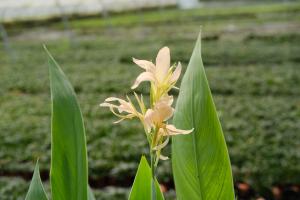How Many Trees Does Ethiopia Plant
Ethiopia, a country located in the Horn of Africa, has been significantly impacted by deforestation over the years, with about 30% of its forests lost since the early 20th century. This has resulted in soil erosion, water shortages, and decreased availability of fuel, food, and medicine for the people of Ethiopia. To combat this, the Ethiopian government embarked on a massive reforestation campaign known as the National Green Development Program, which aims to plant 20 billion seedlings by 2024.
The National Green Development Program
The National Green Development Program was launched in 2019 and is being spearheaded by the Ethiopian Prime Minister, Abiy Ahmed. The campaign involves the planting of a variety of trees across the country, including indigenous species and fast-growing intercrops, which can be used for food and energy. The objective of the program is not only to restore Ethiopia's forests but also to create a greener, more sustainable economy while reducing the nation's carbon footprint.
Progress So Far
The goal of planting 20 billion seedlings within five years is a monumental task, and to achieve it, the government is relying on widespread public participation. Ethiopians have responded positively to the campaign, with millions of people planting trees in their communities. In 2019 alone, Ethiopia set a new world record for the most trees planted in a single day, with over 350 million seedlings planted across the country.
According to the Ethiopian Ministry of Agriculture, the country planted 4 billion seedlings in 2020, exceeding the target for the year. The 4 billion plantation included one billion trees in Addis Ababa, Ethiopia's capital city, making the city greener and more environmentally friendly. The ministry also announced that more than 45 million households have participated in the planting of trees across the country since the program's launch.
Benefits of the Program
The National Green Development Program is already having a significant impact on Ethiopia. The planting of trees is helping to slow down land degradation, reduce carbon dioxide emissions, and improve biodiversity. The program is also providing employment opportunities for Ethiopians, as thousands of people are being hired to plant and tend to the seedlings. Furthermore, the tree-planting campaign is increasing awareness of the importance of environmental conservation and the impact of climate change.
Conclusion
Overall, the National Green Development Program is an essential initiative that is helping to address a pressing environmental issue in Ethiopia while creating economic opportunities for its citizens. Although there is still a long way to go in achieving the goal of planting 20 billion seedlings, the country's progress so far is commendable. The campaign has also become an inspiration to other countries around the world to take action to combat deforestation and climate change.

 how many times do yo...
how many times do yo... how many planted tre...
how many planted tre... how many pine trees ...
how many pine trees ... how many pecan trees...
how many pecan trees... how many plants comp...
how many plants comp... how many plants can ...
how many plants can ... how many plants and ...
how many plants and ... how many pepper plan...
how many pepper plan...






























